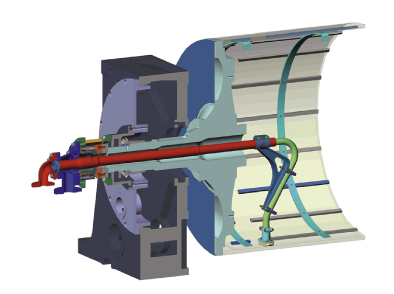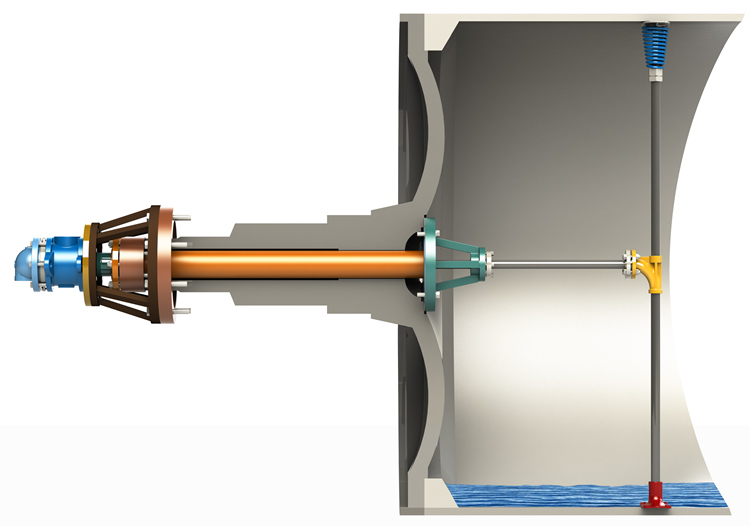The Two Types of Syphon Systems Used in Paper Drying
Syphon design and selection greatly impact paper dryer surface temperature and condensate removal. It is important to maximize shell temperature to achieve a high drying rate. It is just as important to minimize cross-machine temperature deviation to achieve a uniform moisture profile. The proper syphon design and other equipment can achieve both of these objectives.
Two categories exist for syphon design: stationary and rotary. Stationary syphons are fixed, and do not rotate with the dryer while rotary syphons rotate with the dryer.
Stationary Syphons
 In a large majority of paper drying applications, the stationary syphon along with Turbulator® Tube™ bars is the recommended solution for the most reliable dryer drainage. Th cantilever stationary syphon is designed for paper machine dryers running up to 6,500 fpm (2,000 mpm) and is engineered to integrate with the dryer drainage system.
In a large majority of paper drying applications, the stationary syphon along with Turbulator® Tube™ bars is the recommended solution for the most reliable dryer drainage. Th cantilever stationary syphon is designed for paper machine dryers running up to 6,500 fpm (2,000 mpm) and is engineered to integrate with the dryer drainage system.
Rotary Scoop Syphon
 The rotary scoop syphon is designed for dryers operating at slower speeds where the condensate is non-rimming. These syphons require the dryers to have manholes to access the inside of the dryer. The scoop syphon operates by accumulating condensate during its travel through the puddle near the bottom of the dryer. As rotation continues, the scoop mechanically lifts the condensate to the center pipe and discharges it out of the dryer through the horizontal pipe. No pressure differential is required to drain the condensate with a rotary scoop syphon.
The rotary scoop syphon is designed for dryers operating at slower speeds where the condensate is non-rimming. These syphons require the dryers to have manholes to access the inside of the dryer. The scoop syphon operates by accumulating condensate during its travel through the puddle near the bottom of the dryer. As rotation continues, the scoop mechanically lifts the condensate to the center pipe and discharges it out of the dryer through the horizontal pipe. No pressure differential is required to drain the condensate with a rotary scoop syphon.
Rotary Syphon
 The conventional rotary syphon is used for rimming applications where the dryer is operating between 1,000 fpm (300 mpm) and 2,000 fpm (650 mpm). The conventional rotary syphon uses a heavy-duty spring to securely hold the syphon in place against the cylinder shell. A stainless-steel pickup foot is welded to the vertical condensate pipe. The close-clearance design and large syphon perimeter minimize the thickness of the rimming condensate inside the dryer.
The conventional rotary syphon is used for rimming applications where the dryer is operating between 1,000 fpm (300 mpm) and 2,000 fpm (650 mpm). The conventional rotary syphon uses a heavy-duty spring to securely hold the syphon in place against the cylinder shell. A stainless-steel pickup foot is welded to the vertical condensate pipe. The close-clearance design and large syphon perimeter minimize the thickness of the rimming condensate inside the dryer.
